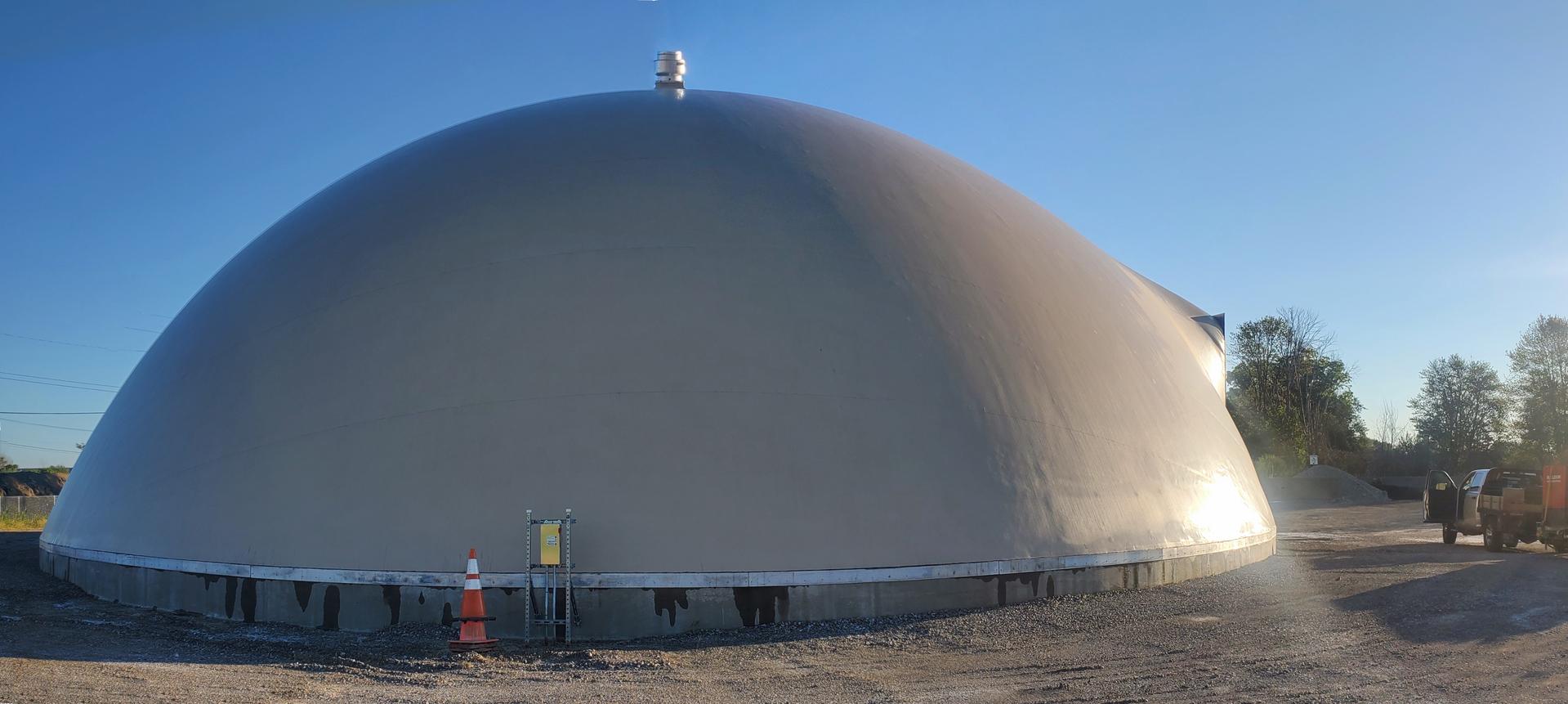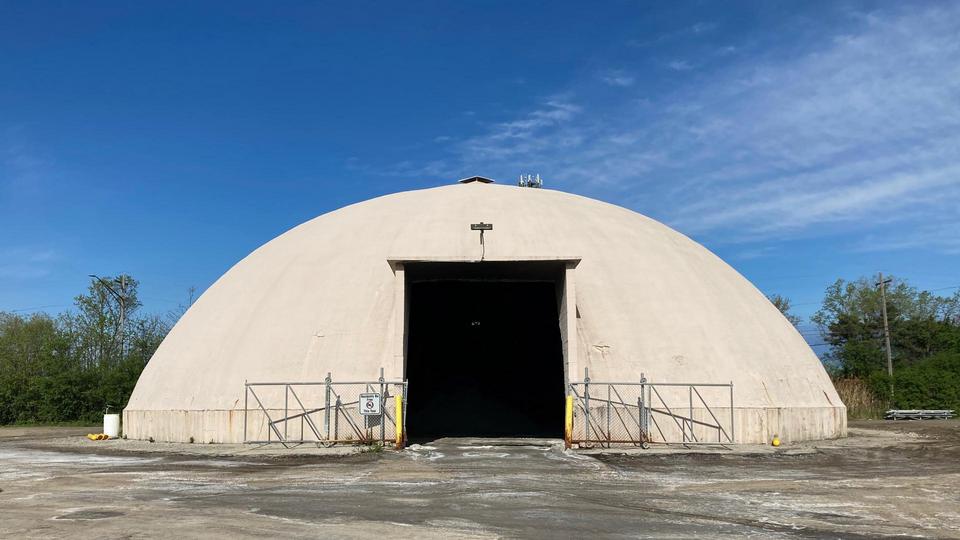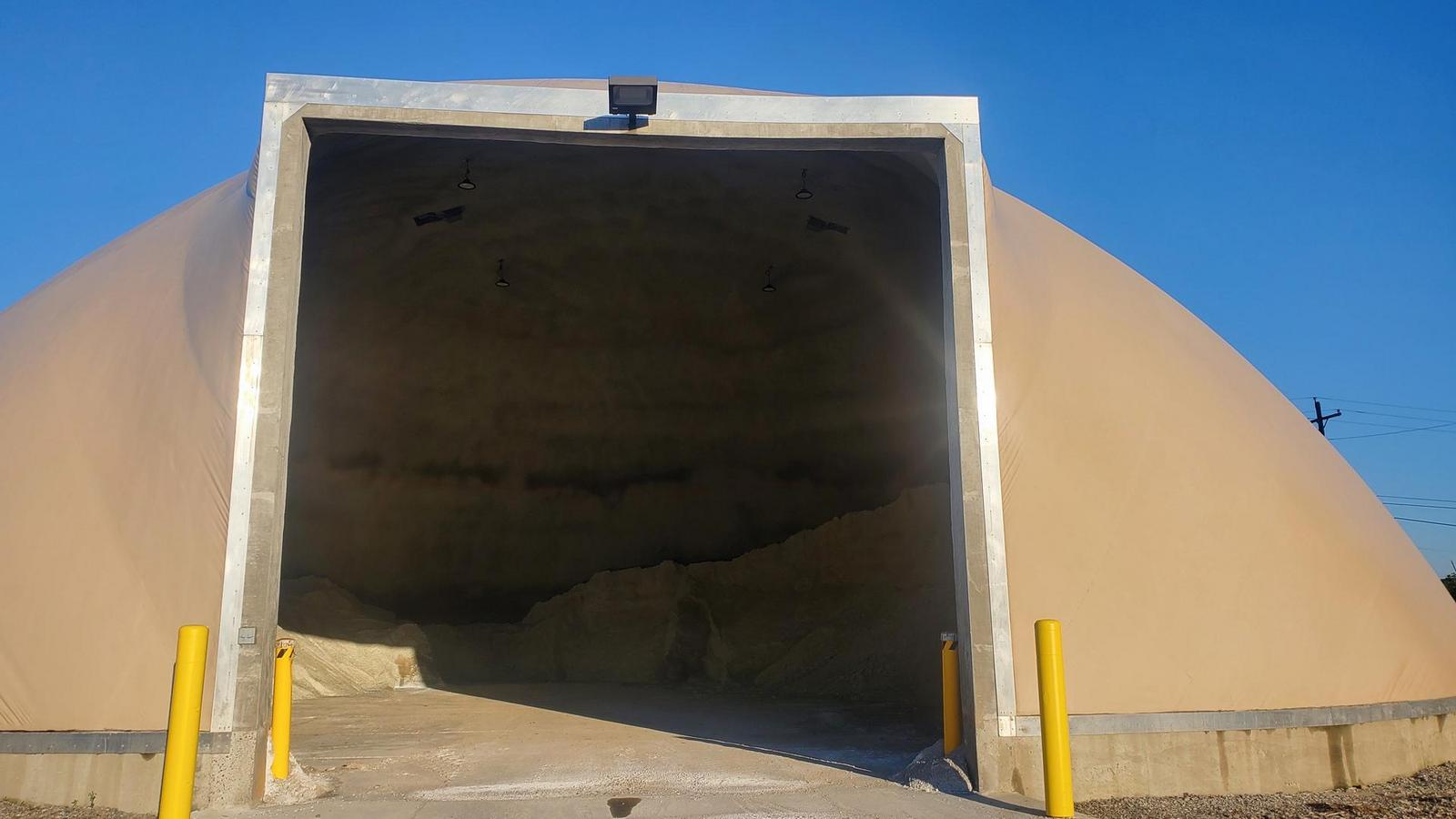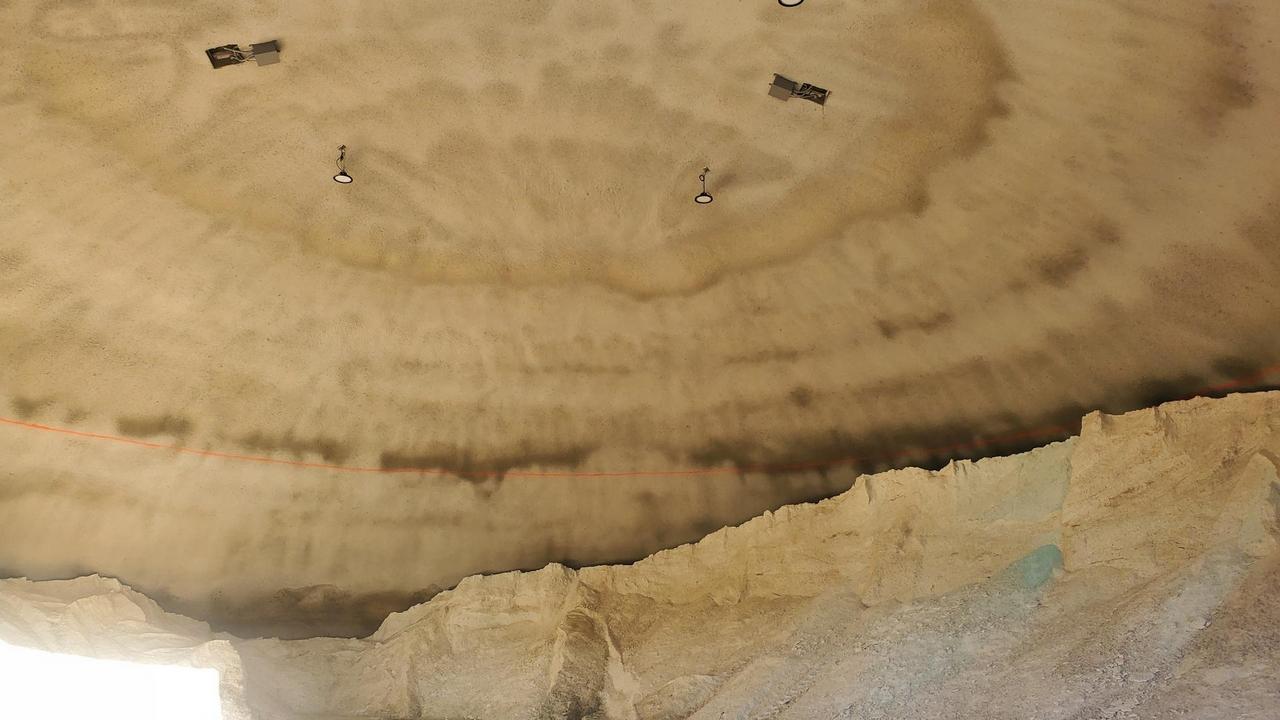Salt Storage Dome Satisfies Madison Heights

The finished Monolithic Dome will last far longer than the previous storage dome and will require much less ongoing maintenance.

Snowplows save the day almost every day during the winter in Michigan. They work best in tandem with an application of road salt. Salt storages dot the entirety of the northern States.
Winter drivers can take great comfort in seeing a snow plow salting the road as temperatures dip below freezing. Even inching along at 25 mph, following 200 feet behind that plow, at least they know they won’t slide off the road. Road salt remains the most common deicer, reducing crashes by 88 percent and injuries by 85 percent, according to a study by Marquette University.
Michigan uses 450,000 pounds (204,116 kg) of road salt annually, and all that road salt must be stored for use. In 2018, the Michigan Department of Transportation found that 48 percent of their 189 salt storage sites were in poor condition. The city of Madison Heights numbered among that percentage, and they contemplated how to replace a dome constructed in the late 1970s.
According to the city’s report, upon receiving competing construction bids, they were surprised to discover the difference in the cost between a geodesic dome and a Monolithic Dome was much less than originally anticipated. They were prompted to perform further due diligence.
To make the decision, Madison Heights personnel visited an insulated concrete dome at the Road Commission for Oakland County in Southfield, a wooden dome with a conveyor in Farmington Hills, and wooden domes in Berkley and Royal Oak.

The concrete storage dome from the 1970s before the city of Madison Heights, Michigan, demolished it.
“In all cases, the respective wooden domes were showing signs of significant distress, multiple and extensive repairs, and failing shingle systems,” their report stated. “The structures require constant, ongoing, and relatively expensive maintenance, both on a routine basis and to mitigate unexpected failures. While a concrete dome also requires maintenance to protect it from the effects of salt and the elements, the interval is much less frequent, and the effects of the maintenance are much longer lasting toward protecting the integrity of the structure.”
The Road Commission for Oakland County (RCOC) had become the only road agency in Michigan to win a 2017 Safe and Sustainable Snow Fighting Award from the Salt Institute for excellence in environmental consciousness and effective management in the storage of winter road salt. RCOC uses five salt domes and one salt shed, according to Craig Bryson, RCOC communications manager.
After studying the situation from every angle, Madison Heights officials chose to have South Industries supply a Monolithic Dome, and it turned out to be a great decision, according to Sean Ballentine, director of public services for the city of Madison Heights.
“We are happy with the dome,” Ballentine said. “It has thus far proven to be durable and low-maintenance, as opposed to a wood-and-shingle structure.”
Ballentine worked as the analyst and planner for the Madison Heights public service department in 2021. The Salt Institute advised storing salt in conical piles, with sides sloping at 32 degrees, which they called salt’s natural angle of repose. A cubic yard (0.76 m³) weighs 2160 pounds (980 kg), and a ton (0.90 mt) of salt takes 25 cubic feet (0.71 m³)of storage space. A pound (0.45 kg) of salt will melt 46 pounds (21 kg) of ice at 30 degrees Fahrenheit (-1 °C) and eight pounds (3.63 kg) at 20 degrees (-6.5 °C). Madison Heights needed sturdy, long-lasting storage, as the snowy period of the year lasts for 4.3 months, from November 26 to April 4. They get an average of 30.5 inches (77.5 cm) of snow annually, and snow and ice often travel together.
“Wood and metal initially are cheaper to build, but if you look at the life cycle of wooden domes, they get replaced more frequently and long-term cost more money than monolithic domes,” said Josh South of South Industries. “With proper maintenance, a Monolithic Dome could last forever. Coating the Airform regularly is one way to ensure its longevity.”

Monolithic Domes resist damage by front-end loaders. The extended augmented entrance makes it easy for trucks and loaders to enter and exit without damaging the dome. Conventional and geodesic storage domes do not stand up to machinery damage the way a Monolithic Dome does naturally—there is always the risk of a loader pushing salt through a wall. Monolithic Domes can and have taken multiple hits by loaders and surprising accidents—like a fully loaded, runaway potato truck—without flinching.
The Madison Heights salt storage dome, a 92-foot (28 m) diameter by 33-foot (10 m) tall spherical shell on a concrete foundation on spread footing, features an 18-foot (5.5 m) by 18-foot (5.5 m) augmented opening, two ventilation fans, and high bay LED lights. The sandstone-colored half-sphere has been built to hold 4000 tons (3629 mt) of salt.
“We wanted something low maintenance that would last us at least another fifty years,” Ballentine said.
South said Monolithic Domes are energy efficient and track only slight temperature variations. Thus, the storage quality remains high. In addition, the dome helps keep humidity in check. If stored salt gets wet, it can clump and become unusable. The Monolithic Dome offers complete protection from the elements.
“These domes provide optimal storage not only for salt but also for coal, sand, cement, fly ash, and limestone products,” South said. “They can be built to handle many tons of storage, up to 50,000 ( 45,359 mt) or even 75,000 (68,039 mt) tons of product.”
“The Monolithic Dome is ideal for salt storage,” South said. “When storing bulk granular products, a load-bearing structure can push on the building itself. As the product fills the space, it can push against the walls.”

The red line indicates the optimal top of the salt pile. In a Monolithic Dome, the red line is naturally so high, it would be difficult for a front end loader to push the pile past the red line.
The two ways to load salt into the storage dome include dumping the salt on the ground and pushing it in with a front-end loader or poring it in through an opening in the top. The augmented entry for the salt dome in Madison Heights reduces loader and truck wear, South said, and the dome also increases safety by allowing for automatic loading and unloading. The dome has no beams or walls, so it’s easy to move trucks and machines in and out of there.
Before constructing the new dome, they had to remove the old one. South said the previous structure was built by a well-known pioneer of concrete thinshells, Horal Harrington. Since then, improvements have been made in the concrete dome industry, with better structural design and improved techniques. The original dome was bare concrete, and the new one is fully insulated, which reduces stress from thermal changes. The city of Madison Heights has found that the new dome meets its needs.
The Michigan Department of Transportation has implemented what they call “sensible salting” procedures to minimize the need for salt while maximizing driver safety, including pre-wetting salt and using sand instead of salt when temperatures dip below 20 degrees (-6.5 °C). “The dome holds somewhere around 3500 tons of salt; depending on the winter, this could be all we need, or up to half, requiring a seasonal refill,” Ballentine said. “As the dome is quite new, we have not had to perform any significant maintenance on it.”
The steel-reinforced concrete of the Monolithic Dome can handle a lot of product loading, South said. Since it’s so strong, there’s no need to build structures to hold conveyors, access platforms, or mechanical equipment.
“It’s a very simple building, efficient in design,” South said. “It’s the highest quality you can get for the cost, safety, and durability.”